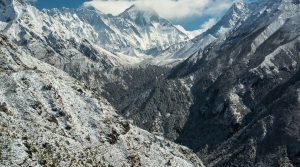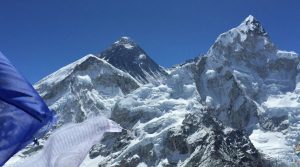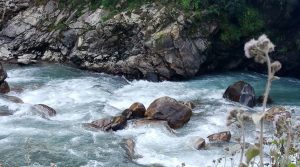Nepal, the land of absolutely beautiful magical mountains is among the world’s best destinations. When it comes to hiking and trekking for all adventure lovers, Nepal has been a great backpacking destination for many centuries. And even today there are some great trekking routes around Nepal. And as we are in the peak trekking season of Nepal, it’s important to keep notes of some places that you would like to visit. Whether you are making your Christmas holiday plans or planning something big for another year, this list might come in handy.
Let us know which of these trekking destination of Nepal you will definitely like to visit.
Everest Base Camp Trek

Everest Peak at 8848 meters is among the eighth wonder of the world and the base camp of Everest makes a very interesting trekking route from Kathmandu, the capital city of Nepal. This is about 14 day of round journey from Kathmandu. You often take a domestic flight to Lukla a thrilling airport landing in the mountains and then walk your way up to Everest for at least eight days. Enlightening Sherpa culture, amusing landscape and a great luxury during the trek is what make this vacation exciting. Everest can be a bit expensive i.e. around $2000 for the trip only. But trust me the money is worth it. And we will recommend family adventure Everest Base Camp Trek for your next vacation.
Annapurna Circuit Trek

Another most popular and beautiful destination in Nepal can be considered to be the Annapurna Massif. Being in the list of the world’s tallest mountains, and having a height of 8091 meters, Annapurna I might be one of the deadliest mountains and also the least climbed one. Unpredictable weather, varying temperatures, unexpected storms and avalanches, heavy winds are the reasons for this. This might be all the reason to add the Annapurna Circuit Trek or even the Annapurna Base Camp Trek to your bucket list. You can experience all kinds of adventures with the breathtaking views of the Annapurna Range, Macchapuchhre Himal, and Dhaulagiri including the Kaligandaki River which flows soothingly between the Annapurna and Dhaulagiri Range. This trek follows the route from Kathmandu to Besisahar going upwards to Manang and then Muktinath (a famous holy temple in Nepal) via Thorong La pass. You can then come back from Jomsom either by walking/bus/flight. This trek lasts almost about 12-13 days. If you don’t have enough time, you can also complete the Annapurna Heli Tour.
Tilicho Lake Trek

Tilicho Lake is the highest situated lake in the world located amongst the Annapurna region at a elevation of 4919 meters. You can complete this trek in 7-8 days, following the route of Kathmandu to Besisahar to Manang on a bus and start walking from Manang to Tilicho Lake Trek via Khangsar, Shree Kharka and finally Tilicho Base Camp. It is one of the affordable (approx. $900) and mesmerizing trek you can complete in Nepal. During this trek, you can enjoy a mesmerizing view of the Himalayas of Annapurna ranges, Tilicho Himal, along with amazing landscapes, a variety of vegetation and local culture and of the settlement there. We do recommend you to visit here and complete this trek at least one.
Langtang Valley Trek
Langtang Valley trek includes the traditional villages in north of the Kathmandu Valley, and also Langtang National Park. Compared to other treks in the mountain regions of Nepal, it is an affordable and easy trek and also doesn’t take much time. Also, you can visit Gosainkunda Lake during this trip, which is considered a very scared lake in Nepal. This region surely has rich bio-diversity as it also is home to many endangered species, both flora and fauna such as Red panda, Rhododendron, Himalayan Thar, Pine and Oaks, Snow leopard etc. This trek is perfect for those who want to immerse in Buddhist culture and traditions as the culture here is surely preserved by Mongolians. Also, the trail is full of stupas, monasteries, waterfalls and colourful praying flags, which makes your journey to Langtang Valley overwhelming.
Manaslu Circuit Trek
Mount Manaslu is the world’s eight highest peak with an elevation of 8613 meters situated in the mid-western region of Nepal. It’s also considered one of the deadliest and difficult mountain peak to climb in Nepal. However, thanks to the well-developed trail, selection of the easiest route and availability of proper help if anything happens, you can surely complete this trek if you have sound physical health. Amongst the beautiful snow-capped mountain ranges, Budigandaki River flowing around, the gumbas and praying flags, and the kind-hearted locals always ready to welcome you with a kind heart, you will feel like in heaven. Also, you can add the side trip to TSum valley, which is a perfect representation of Buddhist culture and Himalayas. This is one trip where you can surely create once in a lifetime experience.

















